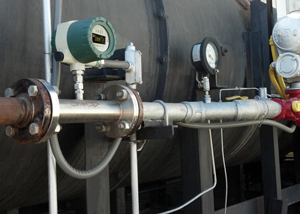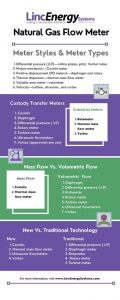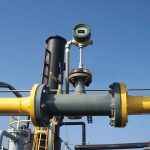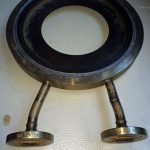Direct Mass Flow Meter: Coriolis versus Thermal Mass Flow Meters
We discuss meters that directly measure mass flow in our continuing series on gas flow meters, specifically Coriolis vs. thermal mass flow meters.
Direct Mass Flowmeters
In our post, Natural Gas Flow Meter Types, we mention that gas flow is computed as mass flow from volumetric meters, velocity meters, and inferential meters. A mass flow meter directly measures the mass of gas passing through the meter, so there are no computations, nor extra equipment, such as pressure and temperature devices, needed to determine mass flow.
There are two direct mass flow meters worthy of discussion when measuring gas.
- Coriolis flow meters
- Thermal mass flow meters
Coriolis
Coriolis flowmeters provide a direct mass flow measurement based on the deflection force of the fluid moving through a vibrating tube; there is no need to compensate for temperature, pressure, and density.
Pros
These meters are highly accurate, highly reliable with high turndown capabilities, and are unaffected by flow profile, even down to very low flow rates. They can measure a mixture of gases, unknown gases, and fluids moving between gas-liquid states. The meters are custody transfer approved. Once installed, the Coriolis flow meters require little maintenance as there are no moving parts. While historically, Coriolis flowmeters were used more for smaller (4″ and less) lines, there have been significant strides from manufacturers now offering flowmeters for 6″ and above lines.
Cons
Coriolis meters are costly to purchase and install, though they have a low cost of ownership over their lifespan. In larger line sizes, typically above 4″, the costs become prohibitive. While they are very accurate for liquids, gas flow measurements can be challenging because of their low density. It may be unsuitable in applications of low flow, low pressure, or where there is a pressure drop across the meter.
Thermal Mass Flow Meter
 Thermal mass flow meters measure the mass flow based on heat transfer from a heated element. The meter injects heat into the gas stream and measures how quickly the warmth disperses, and this value is proportional to the mass flow. As the Coriolis meter, with mass flow measurement, additional pressure and temperature correction is not required. The thermal mass flow meter provides acceptable accuracy and repeatability and is easy to install.
Thermal mass flow meters measure the mass flow based on heat transfer from a heated element. The meter injects heat into the gas stream and measures how quickly the warmth disperses, and this value is proportional to the mass flow. As the Coriolis meter, with mass flow measurement, additional pressure and temperature correction is not required. The thermal mass flow meter provides acceptable accuracy and repeatability and is easy to install.
A good upstream and downstream straight run is needed to achieve a fully developed flow profile with thermal mass flow measurement. As a rule of thumb, a straight run distance of 20 upstream pipe diameters and ten downstream pipe diameters is needed (depending on the disturbances). Some manufacturers, such as Sage Metering, sell flow conditioners to create a uniform flow profile when achieving a sufficient straight run is challenging.
Pros
Among the advantages of the thermal mass flow meter is its relatively low cost versus the Coriolis meter. They also have excellent low-flow sensitivity and can measure gases that the Coriolis meter cannot because the gas density could be too low. Some applications thermal mass flow meters excel in include stack-gas flow measurement and emission monitoring. Because the meters are available in insertion style, the meter can handle large-size pipes or ducts that become cost-prohibitive for the Coriolis meters by using multiple meters.
Cons
Of course, the thermal mass flow meter is not as accurate as the Coriolis meter, though some, like the Sage meter, can achieve an accuracy of +/- 0.5% of Full Scale +/- 1% of reading. The meter is not approved for custody transfer and cannot measure steam flow. Lastly, the user must know the gas composition to measure the gas.
If you are looking for a gas flow meter, consider 4 Things to Consider Before Selecting a Gas Flow Meter Technology.



